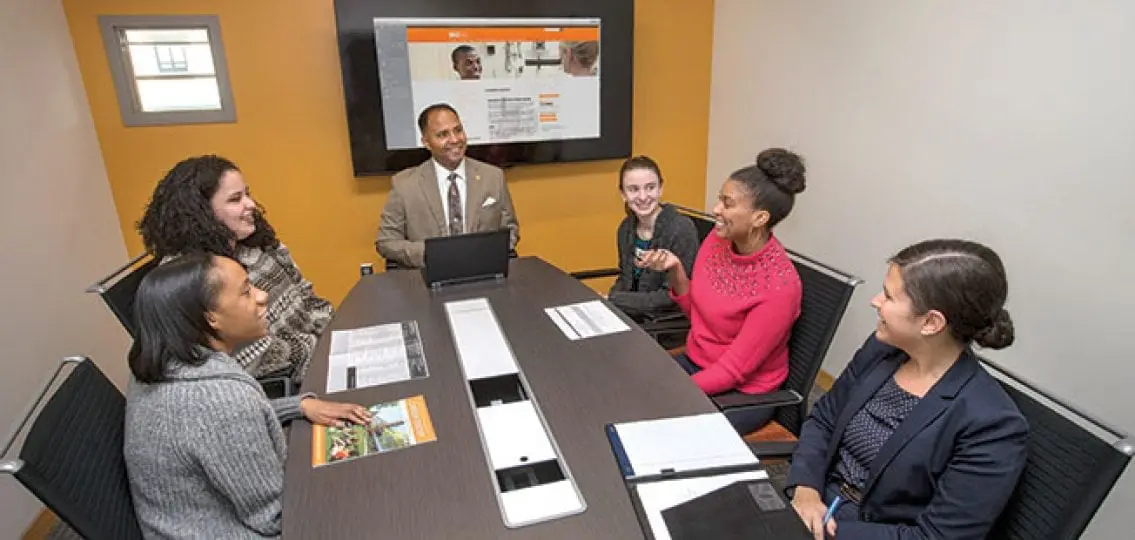Whether your high schooler is looking for a summer job or uploading a resume to their college application—yes, that’s a thing!—it’s a good idea to have a polished resume ready to go. Knowing how to write a cover letter, use social media apps for job searches, and handle an interview will also help land a job.

The Resume
When when Dylan Troesken needed a resume to apply for work at her local fro-yo shop, she was stumped. She didn’t know what to put in the “experience” section since she had never held a job.
Her wise grandmother, Janie Emaus, told her, “You’ve done many things that fall under the category of experience, even if it wasn’t a paying job.” Says Emaus, “I reminded her about her huge commitment to dance competition and community service experience, for example.”
Keisha Taylor, assistant director of the career center at Bowling Green State University, often gets the deer-in-headlights look from students who have no idea how to assemble a resume. Most of them, like Dylan, think they have nothing to include.
“When I meet with students I ask them to walk me through their day,” says Taylor. “If they babysit after school, I ask: ‘How many times a week? What are the responsibilities? Are you driving them to the park, preparing meals, or creating activities for them?’”
“Then we come up with buzzwords to help make their resume stronger.” For example, they might use words like “leadership” and “time management” to describe a regular babysitting commitment, or “civic engagement” and “initiative” when discussing a volunteer commitment.
Taylor warns of several common mistakes, such as using formatted resume templates that don’t fit the position. Another big one: submitting a resume or cover letter that is full of grammatical errors and misplaced punctuation. Using a good proofreader is essential, advises Taylor. A clean, professional font is important, too. (Arial or Times New Roman, yes—Comic Sans, no.)
Cover Letter 101
[adrotate banner=”37″] If a cover letter is requested, your teenager should create a separate document to email along with the resume. “Students need to understand that a cover letter is both a writing sample and their opportunity to sell themselves for this particular job,” says Laura Hosid, an admissions counselor at Vinik Educational Placement Services, Inc. “It should not be a repeat of their resume.”
They should tailor their letter to the job opening and explain why they are a good fit for this particular position, not just why it’s an amazing opportunity for them, says Hosid. “Anyone can say, ‘I’m detail-oriented’ or ‘I’m a team player.’ Prove it with a specific example.”
Social Media
Teens may also want to consider creating a profile on LinkedIn, the most popular professional networking platform in the world. More and more, college applicants are using this buttoned-up cousin of Facebook to help them to stand out to admissions officers.
“Because LinkedIn allows for recommendations and endorsements, it’s like your resume on steroids,” explains Taylor. “When kids first arrive on campus, we encourage them to create a LinkedIn profile if they haven’t already. If possible, they should have a professional headshot taken—no selfies! We teach them how to create a strong, positive online identity.”
The Interview
Is your teen dreading an interview? If your teenager is getting ready for an interview, you can help lessen the fear factor by having them do their homework first. Research the company, create a list of intelligent questions to ask, and prepare several key points to make about themselves. Hosid recommends they practice saying these key points out loud, delivered with a smile.
And don’t forget the thank you note. “We recommend that a student send a thank you email within the first 12 hours after an interview,” says Taylor. “A handwritten thank you card is a nice touch and they can send that within a day or two after the email.”

“It never hurts to send a thank you note for an opportunity even if you don’t receive an offer. Always leave on a positive note.”




